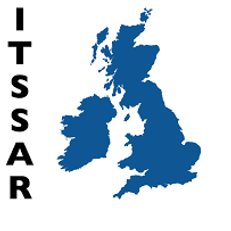Overhead Crane


Overhead cranes are used to lift, move and position heavy loads in the industrial, manufacturing and construction industries. Gantry OHC’s, being a popular crane in these industries, are normally operated from ground level with either a pendant or remote controller. If slinging their own loads, OHC operators will normally have (recommended) attended a slinger course
Category: Overhead Crane
Accrediting Body: Independent Training Standards Scheme & Register (ITSSAR)
Maximum Ratio: 4 : 1 : 1 (4 Trainees : 1 Instructor : 1 Machine)
Durations:
Novice* – 1 or 2 Operators = 1 day, 3 or 4 Operators = 2 days
Experienced** – 1, 2, 3 or 4 Operators = 1 day
Safety Refresher*** – 1, 2, 3 or 4 Operators = 1 day
* For trainees with little or no previous experience of a carrying out the duties of an overhead crane
** Existing operators with some previous experience of using an overhead crane but have not received formal training
*** This course is available for those trainees with in-date documentary evidence of formal training
Course Breakdown
The following is a list of elements that make up a novice course. (N.B. The list for experienced operators and safety refreshers courses may be shorter).
-
Course Introduction, the need & reasons to train and relevant statutory requirements
-
Overhead crane operator responsibilities
-
Personnel Protective Equipment (PPE)
-
Recognised signals within the industry
-
Introduction to the equipment, control familiarisation and principles of operation
-
Selection, identification and pre use inspection of lifting accessories
-
Identification, use and adjustment of attachments in pre-determined positions
-
Planning the lift and manoeuvre
-
Basic and advanced manoeuvring exercises in an open and enclosed area
-
Control of a load swing
-
Operators safety code and relevant handout
-
Rated capacity and load stability
-
Load types, handling and weight assessment
-
Relevant safety film
-
Locating the overhead in a safe place (park position) and post checks
-
Testing: Pre-use checks, practical skills and theory
All courses are ITSSAR accredited and are recognised throughout the industry.
On-Site Courses and Facilities Required
The course will be delivered on your premises. This will give your employees the advantage of being trained and tested on the overhead crane they will use on a daily basis after training has been completed.
Training can be tailored/bespoke to your business requirements, but the following facilities will be required:
-
Access to your lifting equipment (i.e. crane) and lifting accessories
-
An area large enough for lifting, manoeuvring, lowering and testing
-
For theory training – an area large enough for the instructor and the trainees to work, with chairs, tables and a power supply
-
It is recommended that all overhead crane operators wear safety footwear, headwear, and a hi-visibility vest. Other personal protective equipment is as per the company’s SSOW/RA
Certification
After completing the course you will receive:
-
A certificate e-mailed to you
-
If you have applied for ITSSAR TOPS* (Trained Operators Passport Scheme), you will be registered onto the TOPS database, have your own TOPS number and receive a photo identification card.
* There is an additional charge of £20 per trainee. This covers the registration onto the TOPS database and card
After Care
After completing the training, feedback (verbally and written) will be given to both the trainee and their manager on the trainee’s performance including any recommendations.
When refresher training is due, (HSE recommends every 3 – 5 years, your company policy may differ), notification will be sent via email.
Contact us to get started


